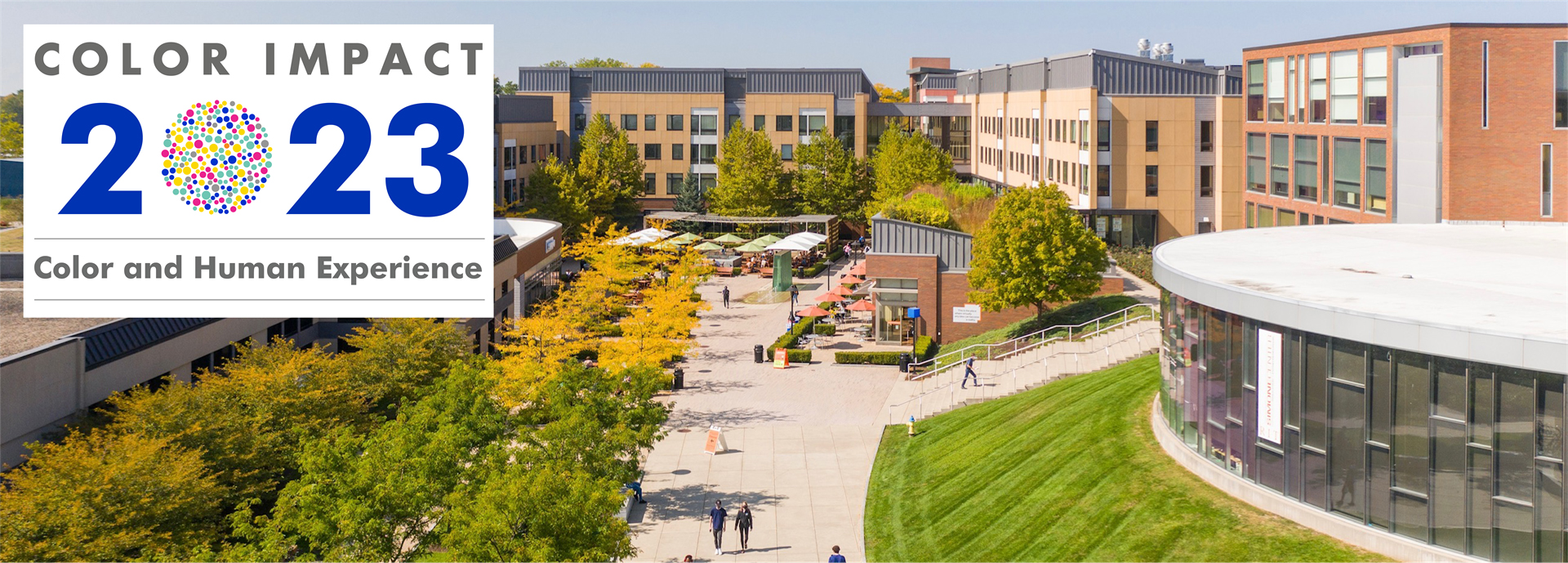Color Impact 2023 was a great success. These pages are left here for archival purposes.
We hope to see you at a future Color Council meeting! Our next conference in June 2025.

June 11-15, 2023
Rochester Institute of Technology, Rochester, NY, USA
Presenter - Mark Fairchild
|
Mark Fairchild, Professor of Color Science
Modeling Hue PerceptionHue can be described with two types of scales. The first, for hue discrimination, is of the form of a hue angle metric such as found in the Munsell and CIELAB systems. The second, for hue appearance, is in the form of a hue quadrature metric as found in the NCS system and color appearance models such as CIECAM16. Any useful hue metric should also exhibit hue constancy. Hue angle in the IPT color model has repeatedly been shown to very well describe contours of constant hue and has been rigorously tested over more than two decades. However, the IPT model was not designed with hue spacing, for either discrimination or appearance, in mind. This presentation describes the derivation of a fundamental and physiologically plausible model, called FHS for Fundamental Hue Scales, with predictors for both hue discrimination and hue appearance built directly from cone fundamentals and with hue linearity as good as that found in IPT. The general model includes three steps. First step is to transform the XYZ to LMS if needed, which was done using the suggested matrix in IPT model. Other matrices such as the Hunt-Pointer-Estevez or the Guth can be used too. The second step is to build a color discrimination scale by calculating the initial opponent axes. This step gives the CIELAB-like hue angle and straight hue lines. Third step is introducing a simple transformation to rotate the opponent axes of second step. The result is orthogonal representation of the unique hues as a hue scale for color appearance models. This step directly gives the hue-quadrature type of metric. Such a model can be used with individual LMS color matching functions as the basis for the hue dimension of improved, and individualized, color appearance scales.
Beyond the Pale (Ale) and Behind the Blush (Wine): The Colors of Potent Potables - Monday 3:30 - 4:30
They say you can't judge a book by its cover, but how about what you drink? We will discuss the nuances of the color of beer and wine, and tools that are used to communicate that color. It is said that the First Taste is with your eyes. Yes it is true, and yes the hue is important!
There’s No Such Thing as Color Space…Prove Me Wrong - Monday 4:45 - 5:45
This roundtable discussion examines the question of what constitutes a color space and whether they have any significant perceptual meaning. The term “color space” is very commonly used, but applied to a wide variety of specifications from device signal values (RGB, CMYK, YCbCr, ICtCp), to cone responses (LMS), to tristimulus values (XYZ) and chromaticity coordinates (xy, u’v’), to cone contrasts (ΔL,ΔM,ΔS), to color differences (ΔL*Δa*Δb*, ΔL*ΔC*ΔH), to opponent responses (L+M+S, L-M, L+M-S)to quasi-appearance models (CIELAB, CIELUV), to color appearance models (CIECAM02, CIECAM16), to color order systems (Munsell, NCS), etc. It is reasonable to ask whether any of these systems benefit our scientific understanding of color perception by being expressed as three-dimensional spaces rather than simply three, or more, independent perceptual dimensions. Color appearance is best expressed using five independent perceptual dimensions and squeezing those into three- or five-dimensional spaces is not helpful. The same can likely be said for color difference and encoding metrics. Mark will briefly review this concept, pose questions, and facilitate an open round-table discussion. Prove him wrong! (If these questions do not fill the allotted time, we can discuss the fact that there is no such thing as color constancy!)
Bio
Mark D. Fairchild is Professor in the Program of Color Science and Munsell Color Science Laboratory at the Rochester Institute of Technology. He received his B.S. and M.S. degrees in Imaging Science from R.I.T. and Ph.D. in Vision Science from the University of Rochester. He also seriously enjoys applying his interests in human sensory perception to the study and appreciation of wines, particularly those from the local Finger Lakes region of New York. He has formal certifications in viticulture and enology (winemaking) from UC Davis, Cornell, and the WSET.
The Inter-Society Color Council advances the knowledge of color as it relates to art, science, industry and design.
Each of these fields enriches the others, furthering the general objective of color education.
© ISCC

